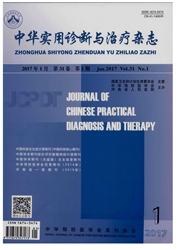

 中文摘要:
中文摘要:
目的探讨完全性心动过速性心肌病(tachycardia—inducedcardiomyopathy,TCM)患者的临床特点和预后。方法完全性TCM患者45例(TCM组)与扩张性心肌病(dilatedcardiomyopathy,DCM)患者50例(DCM组),记录2组首诊和随访时临床资料,总结分析其特点及预后。结果TCM组28例接受射频消融术根治心律失常,17例持续用药物控制心室率或维持窦性心律,其中1例植入自动复律除颤器;随访10~14个月时,TCM组心率、纽约心功能Ⅲ~Ⅳ级患者比例、脑钠肽前体水平及左心室舒张末期内径均明显低于治疗前及DCM组,左室射血分数明显高于治疗前及DCM组(P〈0.01);随访10~14个月时TCM组发生复合终点事件3例(6.7%),DCM组发生复合终点事件16例(32.0Vo),差异有统计学意义(P〈0.01)。结论当合并存在快速性心律失常和心力衰竭时,应注意TCM的诊断;药物控制或射频消融术可使多数TCM患者心脏结构和功能恢复正常,预后明显优于DCM。
 英文摘要:
英文摘要:
Objective To analyze the characteristics and prognosis of pure tachycardia-induced cardiomyopathy (TCM). Methods The clinical data of 45 pure TCM patients (TCM group) and 50 dilated cardiomyopathy patients (DCM group) were recorded at the first admission and follow up survey to analyze the clinical characteristics and prognosis. Results In TCM group, 28 patients received catheter ablation, and the other 17 patients received medications to control ventricular rate or maintain the sinal rhythm, in which one patient was implanted automatic implantable cardioverter defibrillator. After the follow up survey for 10 to 14 months, the heart rate, the proportion of patients with NYHA [~ ~IV class, N- terminal pro-brain natriuretic peptide (NT-ProBNP) level and left ventrieular end-diastolic dimension were significantly lower than those before treatment in TCM group as well as after treatment in DCM group (P~0. 01). After the follow-up survey for 10 to 14 months, composite events occurred in 3 cases (6.7%) in TCM group and 16 cases (32.0%) in DCM group, which showed a significant difference (P〈0. 01). Conclusion TCM should be considered when tachyarrhythmia is complicated with heart failure. Catheter ablation or medication treatment can restore the heart structure and function in TCM patients, with a better prognosis than DCM patients.
 同期刊论文项目
同期刊论文项目
 同项目期刊论文
同项目期刊论文
 Atorvastatin prevents mesenchymal stem cells from hypoxia and serum-free injury through activating A
Atorvastatin prevents mesenchymal stem cells from hypoxia and serum-free injury through activating A 期刊信息
期刊信息
